This pub was first recorded as The Crown in 1743. The building probably dates from the 16th century and has been a pub ever since. By 1790, The Crown became The Chaffcutters. By 1850, it had become The Crown again. In recent years, the building has had several names, but has now reverted to The Crown.
A print and text about the history of The Crown.

The text reads: In the days when people were unable to read, every business needed a recognisable sign. A pawnbroker, for example, displayed three golden balls and barbers a red and white striped pole.
Tavern-keepers originally showed a bundle of vine-leaves, called a bush. Later, to distinguish themselves from rivals, they used simple individual signs. Such as suns and stars.
Many other pub-signs use the coat of arms of a local landowner. The white Hart came from the arms of King Richard II, whilst The Red Lion from those of John of Gaunt.
By the 17th century, towns had so many business signs that they began to obstruct the streets. Most traders had to remove their signs, leaving those belonging to pubs and inns.
The building that you are now in probably dates back to the 16th century, since when it has been a pub. The Crown is first mentioned by name in 1743, but by 1790 it was the Chaffcutters. By 1850 it had become the Crown again. In recent years the building has had several different names, but it is has now reverted to the Crown.
Above: The High Street, c1912.
Illustrations and text about Berkhamstead Castle.
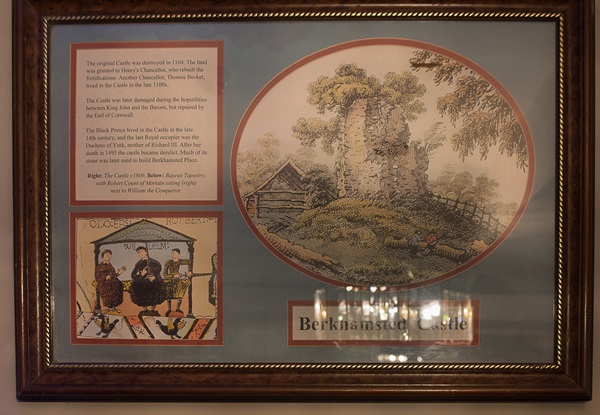
The text reads: The original castle was destroyed in 1104. The land was granted to Henry’s chancellor, who rebuilt fortifications. Another chancellor, Thomas Becket, lived in the Castle in the late 1100s.
The castle was later damaged during the hostilities between King John and the Barons, but repaired by the Earl of Cornwall.
The Black Prince lived in the castle in the late 14th century, and the last royal occupier was the Duchess of York, mother of Richard III. After her death in 1495 the castle became derelict. Much of its stone was later used to build Berkhamstead Place.
Right: The castle c1800
Below: Bayeux Tapestry with Robert Count of Mortain siting (right) next to William the Conqueror.
Photographs and text about Berkhamsted School.

The text reads: Berkhamsted School was founded in 1541 on the initiative of John Incent, Dean of St Paul’s Cathedral, whose house stands in the High Street.
When the hospitals run by the monks of St John’s Well were closed, one of the monk’s buildings, and the hospitals’ funds, were used to establish ‘Dean Incent’s Free School and Chantry’. The school soon outgrew the original site and moved to a large purpose-built School House on Castle Street.
There was a little change until re-organisation in 1841 revitalised the school. Under the headship of the reverend doctors Edward Bartrum and Thomas Fry, pupil numbers began to rise, and additional buildings were erected.
Fry was succeeded by CH Greene. Two of Greene’s sons are famous old boys of Berkhamsted School – Graham, the novelist, and Hugh, who became director general of the BBC. The family name is also commemorated by the School properties Greene’s House and Greene Fields.
Above: left, Dr Fry, right, Berkhamsted School, 1914. Graham Greene (centre) at his father’s feet.
An illustration and text about William the Conqueror.
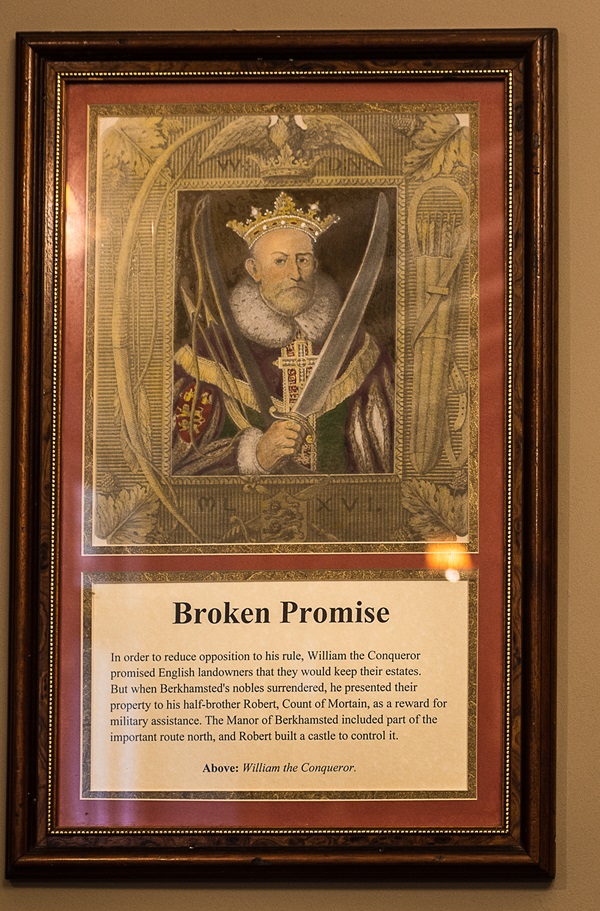
The text reads: In order to reduce opposition to his rule, William the Conqueror promised English landowners that they would keep their estates. But when Berkhamsted’s nobles surrendered, he presented their property to his half-brother Robert, Count of Mountain, as a reward for military assistance. The Manor of Berkhamsted included part of the important route north, and Robert built a castle to control it.
Above: William the Conqueror.
An illustration and text about Thomas Becket.
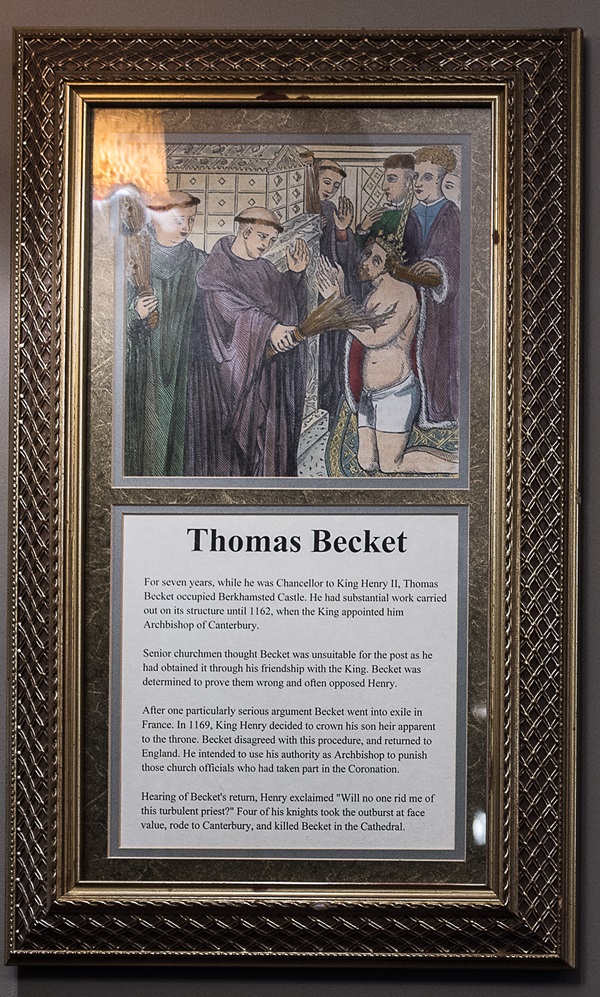
The text reads: For seven years, while he was chancellor to King Henry II, Thomas Becket occupied Berkhamsted Castle. He had substantial work carried out on its structure ununtil162, when the King appointed him Archbishop of Canterbury.
After one particularly serious argument Becket went into exile in France. In 1169, King Henry decided to crown his son heir apparent to the throne. Becket disagreed with this procedure, and returned to England. He intended to use his authority as Archbishop to punish those church officials who had taken part in the Coronation.
Hearing of Becket’s return, Henry exclaimed “Will no one rid me of this turbulent priest?” Four of his Knights took the outburst at face value, rode to Canterbury, and killed Becket in the Cathedral.
A photograph of the mill, Berkhamstead, c1910.

A photograph of Castle Street, Berkhamsted.

A photograph of High Street, Berkhamsted, c1918.
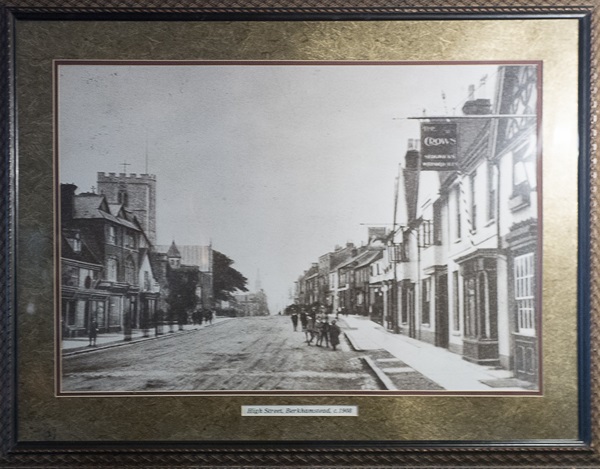
A photograph of High Street, Berkhamstead, c1908.
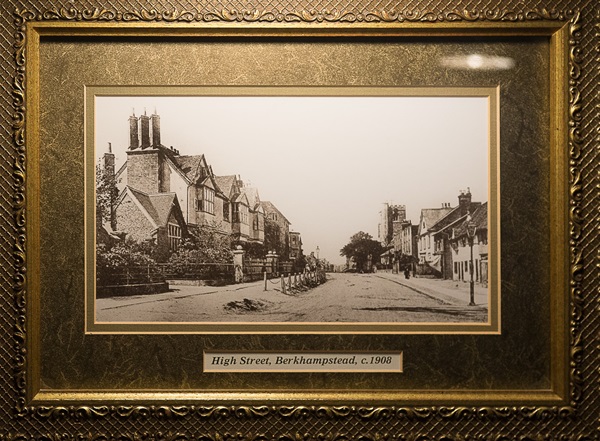
A photograph of the entrance to Castle Grounds, Berkhamstead, c1908.
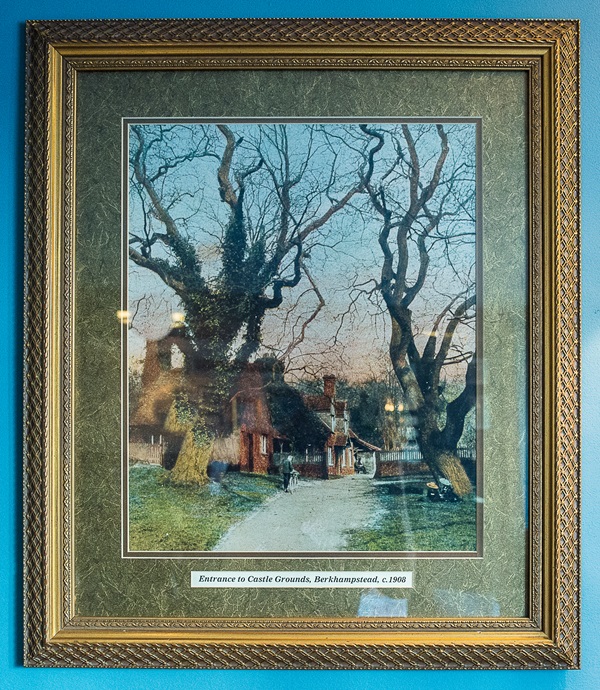
External photograph of the building – main entrance.

If you have information on the history of this pub, then we’d like you to share it with us. Please e-mail all information to: pubhistories@jdwetherspoon.co.uk